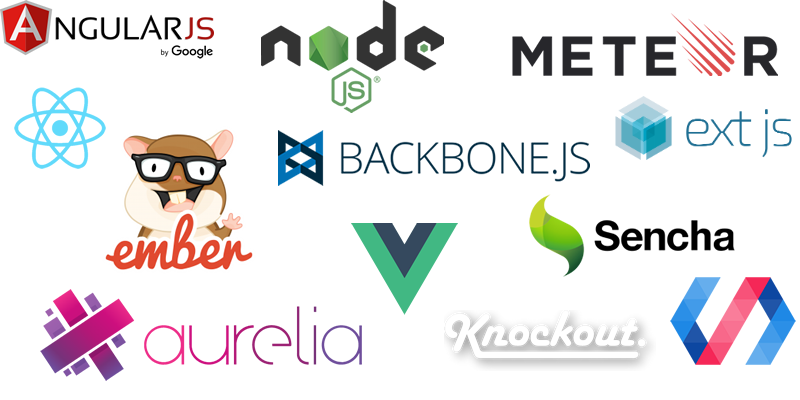 Selecting a best Javascript framework for your project can be a tricky work to do. Every year new frameworks are gaining popularity but that doesn’t mean that the old ones will lose their significance.
Selecting a best Javascript framework for your project can be a tricky work to do. Every year new frameworks are gaining popularity but that doesn’t mean that the old ones will lose their significance.
It is imperative to choose the right platform for your project. However, popularity is not the indicator of the best platform but it gives you insight about which platform to go for successful development.
In this article, we will go through the most in-demand Javascript frameworks of 2019.
ReactJS
We all know the popularity of the ReactJS framework among developers. It was developed and maintained by Facebook. It gives developers the ability to work with a virtual browser which is more friendly than the real browser. React’s virtual browser acts as an agent between the developer and the real browser.
React is just JavaScript, there is a very small API to learn, just a few functions and how to use them. There are no hurdles to entry. Javascript developers can become an efficient React developer in a few hours.
Angular JS
Well, the major reason behind the reliability of AngularJS is that it is Google’s product. Hence, the trust of the audience is tangible. The coding style of the AngularJS is in such a way that developers from the Java background can feel at home while learning this language. Most importantly, it is used to create large scale business applications and still having organized without having many efforts.
AngularJS allows you to build an app if you only know 1% of it, whereas other frameworks require you to know quite a bit before you build anything.
Vue.jS
Vue has taken JavaScript world by the storm and for a good reason. Vue is useful for the sophisticated single page application when we use it in combination with modern tooling and supporting libraries.
Here are some reasons to choose Vue!
- Vue is really fast
- It relatively easy to learn Vue than some bigger frameworks.
- It is easy to amalgamate into other applications and language.
- It has an incredibly small file size, making it easy to include in projects without creating a slowdown.
People who are just getting started with the JavaScript framework, or who is in a need of something lightweight for a project can opt for the Vue.js.
Ember.js
Like AngulaJS, Ember is also a full-featured framework that builds dynamic and beautifully rendered Single page applications.
It is meant for the apps that plan to scale into much bigger projects. In addition, it enforces rules on how you write your code to ensure swift application. Ember is a great choice if you are planning to build your SPA (Single Page Application) right from the bottom up.
Some other reasons to consider Ember is that it offers faster boot times and inherent stability. With the recent release of Ember 2.0, the framework has been modified to bring out the best of Glimmer, Ember’s fast rendering engine.
Meteor.js
The biggest advantage of meteor.js is it’s a full stake framework. Which means you can control everything from the database to the UI with the same language and same framework.
Meteor lets developers learn one tool and use it for almost everything in their application. Hence, it makes it an exciting proposition for new developers who are aiming at full stake positions or projects. It comes with a variety of useful smart packages readily available for all manner of uses. Moreover, it allows the inclusion of custom packages for those who want to create their own.
The best part is its active and engaging community. It provides support on the forums by building and maintaining packages for public use.
Backbone.js
It has been around for a long time but it is still ubiquitous. It’s easy to create small and slick web applications with frameworks like jQuery. But, when a project grows, the jQuery declaration and callbacks get more and more complex and are distributed all over the place. The code becomes cumbersome and hard to read.
Backbone provides different types of building blocks like models, views, events, routers, and collections for assembling client-side web applications. In Backbone.js when the model changes, it automatically updates the HTML of your application.
Backbone is fast and lightweight. Though, it takes longer development time and greater understanding of its inner workings. Hence you need to make sure of your requirements before considering it.
Conclusion
So at the end of the day, only one question pops up into mind: which one should I choose for my project?
Still confused between the most in-demand JavaScript framework? Well, think calmly about your time, requirements and project. In any case, these frameworks give any developer at least a recommendation or two that meet their needs.
Contributed byhttps://www.excellentwebworld.com/







